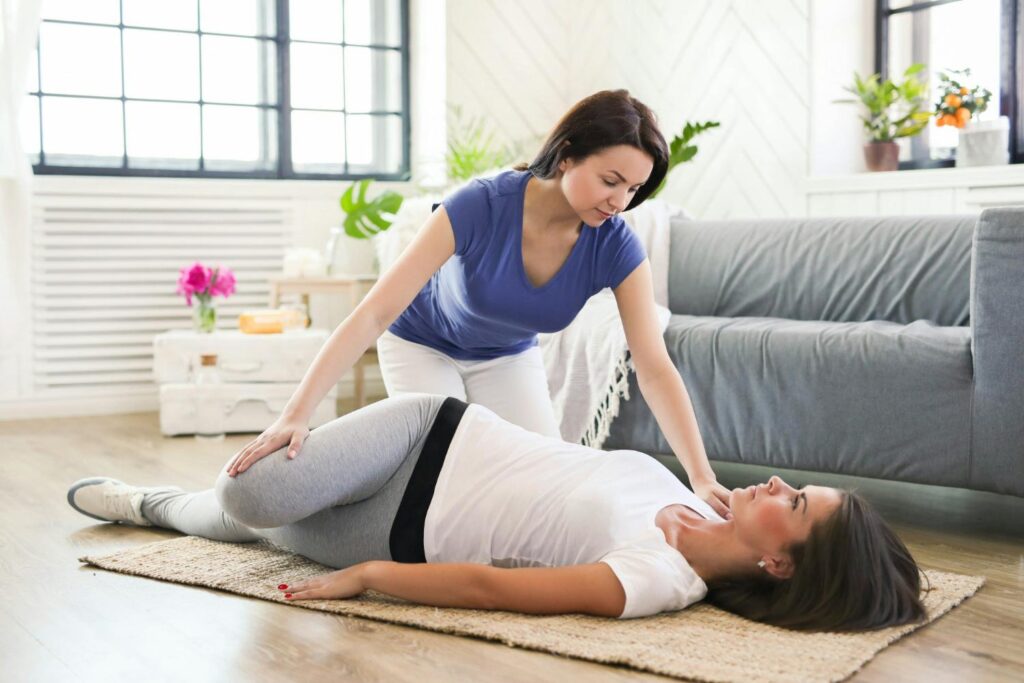The Significance of Pelvic Wellness in Day-to-Day Wellbeing

Pelvic health is still one of the most neglected parts of overall wellbeing, even though it plays a central part in our day-to-day comfort, self-assurance, and quality of life. The pelvic floor, an intricate system of muscles, ligaments, and tissues that hold up our central organs has a bearing on everything from posture and bladder control to sexual health and core stability. When these muscles are working at their best, we navigate life more easily and with more confidence. When they are not, the ripple effects can touch almost everything in our well-being.
Recognizing pelvic health as something more than a medical issue, understanding it as part of overall wellness that requires the same level of attention we accord to cardiovascular health, mental well-being, or nutrition. But so much remains unknown to many people about how their pelvic floor works and how they might care for it during various stages of life.
The effects of ignoring pelvic health go well beyond physical pain. Weak pelvic floor muscles can cause lower back pain, impair our ability to play sports we love, and play havoc on intimate relationships. For most, these issues develop slowly, allowing us to easily ignore them until they seriously disrupt daily routines. The good news is that with appropriate education and attention, pelvic health can be maintained and supported at any point in life.
The Backbone of Core Wellness
Pelvic health is important because these muscles are the foundation of our entire core system. Consider the pelvic floor as a hammock cradling your bladder, bowel, and reproductive organs. When the hammock is flexible and strong, it gives good support with room for required movement and function. When it is weak, tight, or unbalanced, the whole core system is affected.
Typical pelvic health issues are weakness in the muscles, usually felt after giving birth or as a natural function of ageing. Most women find there’s altered bladder control, decreased feeling during sex, or feeling of fullness or heaviness in the pelvic region. These symptoms are not a necessary outcome of childbearing or ageing—they’re signals that the pelvic floor demands some care and service.
Men, too, have pelvic health issues, especially as they grow older. Prostate wellness, bladder control, and sexual health are all linked to pelvic floor muscle strength. And while the general talk about pelvic health tends to revolve around women’s experiences, there are many men who have no idea what it takes to support this important part of their health.
The wider effects of poor pelvic health reach into mobility and everyday functioning. Once core stability is impaired, basic movements such as lifting, bending, or even walking can be difficult or uncomfortable. This can result in compensatory movement patterns that build tension and pain in the rest of the body, most commonly the lower back and hips.
Most importantly, pelvic health has a direct impact on confidence and overall quality of life. When we’re anxious about bladder control, feeling uncomfortable during exercise or other physical activities, or feeling disconnected from our body, these issues can influence our desire to participate in social events, exercise, or sexual intimacy. Treating pelvic health isn’t merely addressing physical function—it’s about restoring confidence and energy.
Building Strength Through Movement and Awareness
Classic pelvic floor exercises are the basis of pelvic health care. Kegel exercises, done by contracting and releasing the muscles of the pelvic floor, can be immensely valuable when done appropriately and on a regular basis. Yet most individuals have trouble with technique, either squeezing too hard or not relaxing completely between squeezes.
Yoga provides yet another useful method of maintaining pelvic health by pairing breath with slow movements that enhance pelvic floor function. Hips-opening poses, core-strengthening poses, and relaxation poses can all be beneficial to pelvic health. The conscious awareness gained from the practice of yoga also enables individuals to learn more about their pelvic floor muscles and how to appropriately engage them.
Physiotherapy delivers individualized advice for individuals facing particular pelvic health issues. Pelvic floor physiotherapists are able to evaluate muscle function, detect imbalances, and develop customized exercise regimens. Such professional expertise is especially useful in treating dysfunction or in preparing for significant life transitions such as pregnancy and delivery.
Daily routines also have a significant function in the maintenance of pelvic health. Good posture, appropriate hydration, stress management, and minimal sitting are all beneficial to the optimal functioning of the pelvic floor. Easily made adjustments such as taking frequent movement breaks throughout prolonged workdays or engaging in deep breathing exercises can make a significant long-term impact.
Consistency is more important than intensity when dealing with pelvic health exercises. Short, frequent sessions are preferable to infrequent long workouts. The secret is incorporating pelvic health consciousness into everyday habits instead of viewing it as an independent, time-consuming practice.
Finding Supportive Wellness Tools
As knowledge of pelvic health has improved, so have the devices that can assist it. In addition to conventional exercises, pelvic exercises and safe equipment like a vibrator for pelvic health can enhance circulation and recovery. These devices operate by stimulating blood flow to the pelvis, which assists in tissue health as well as helping with muscle recovery after exercise.
The benefits of vibration for therapy are greater circulation, bringing in new oxygen and nutrients to tissues and aiding in the elimination of metabolic waste products. The increased circulation can assist the strengthening and healing process, most useful for those healing from childbirth, surgery, or injury. Gentle vibration is also helpful in enabling individuals to better know their pelvic floor muscles, making standard exercises more productive.
Safe use of such devices involves care about hygiene and material quality. Materials that are body-safe, such as medical-grade silicone, are needed to avoid irritation or infection. Cleanliness before and after play using gentle settings first and being attentive to your body’s feedback are all key points in safe usage. It’s also necessary to consider these tools as part of an overall approach to pelvic health and not something to be used on its own.
For individuals experiencing muscle tension or pain, vibration may be a therapeutic relaxation aid. Long-term tension in the pelvic floor musculature can cause pain and dysfunction, and mild vibration may be used to release such tension when applied properly. Yet anyone with ongoing pain or dysfunction needs to see a healthcare professional to eliminate any underlying conditions that need special treatment.
The psychological benefits shouldn’t be overlooked either. Taking an active role in caring for your pelvic health can boost confidence and body awareness. This increased connection with your body often translates into greater overall wellness and a more positive relationship with physical self-care.
Transforming Daily Life Through Better Pelvic Health
The daily rewards of enhanced pelvic health reach into nearly every area of daily life. Increased bladder control translates into increased confidence with exercise, travel, and social events. No longer having to think about where to find bathroom facilities or risk surprise leakage frees up time to enjoy more spontaneous and carefree experiences.
Better posture is a natural consequence of more effective core stability, which helps minimize back pain and optimize general comfort when sitting or standing for extended periods. Improved alignment tends to manifest in easier breathing, improved energy levels, and diminished tension in the body as a whole.
Increased intimacy is another important advantage of good pelvic health. When the muscles of the pelvic floor are functioning best, sensation and comfort during sexual activity generally improve. This can make relationships stronger and improve overall life satisfaction and emotional health.
Physical pursuits are more enjoyable with a strong, functioning core. Whether hiking, dancing, playing sports, or just keeping up with kids or grandkids, healthy pelvis health is the basis for an active lifestyle. The added activity creates positive feedback loops, enhancing overall health while strengthening the pelvic floor even more.
The self-assurance derived from trusting your body should not be discounted. As bodily concerns no longer consume our minds or restrict our movements, mental and emotional resources become free to pursue other activities. Freedom from this kind of restriction often results in more social interaction, greater willingness to experiment with new activities, and generally enhanced quality of life.
Embracing Holistic Pelvic Wellness
Pelvic health is so much more than the lack of dysfunction—it’s about maximizing this vital system to aid in lifelong vitality and well-being. Like any facet of health, it thrives on regular care, proper instruments, and a global approach that accounts for interrelatedness of physical, emotional, and social well-being.
The path to improved pelvic health is extremely personal, based on one’s age, health history, lifestyle, and individual objectives. What is beneficial for one individual may require adjustment for another, which is why awareness and utilization of qualified professionals when necessary are invaluable.
Technology and therapeutic devices keep advancing, with new possibilities for the management of pelvic health. These innovations function optimally when part of a holistic regimen that combines proper exercise, lifestyle intervention, and professional advice as necessary.
Taking responsibility for your pelvic health is an investment in long-term well-being that reaps rewards in every area of life. By means of age-old exercises, mindful movement practices, or thoughtful, supportive tools, regular attention to this essential component of health can change not only the way your body operates, but how you navigate the world with confidence and aliveness.
The way forward is to accept that pelvic health is an integral component of overall health, worthy of the same care and consideration we provide for other determinants of our well-being. By acquiring the right knowledge, with proper equipment, and regular practice, peak pelvic health is within reach for individuals from all walks of life and all ages.



